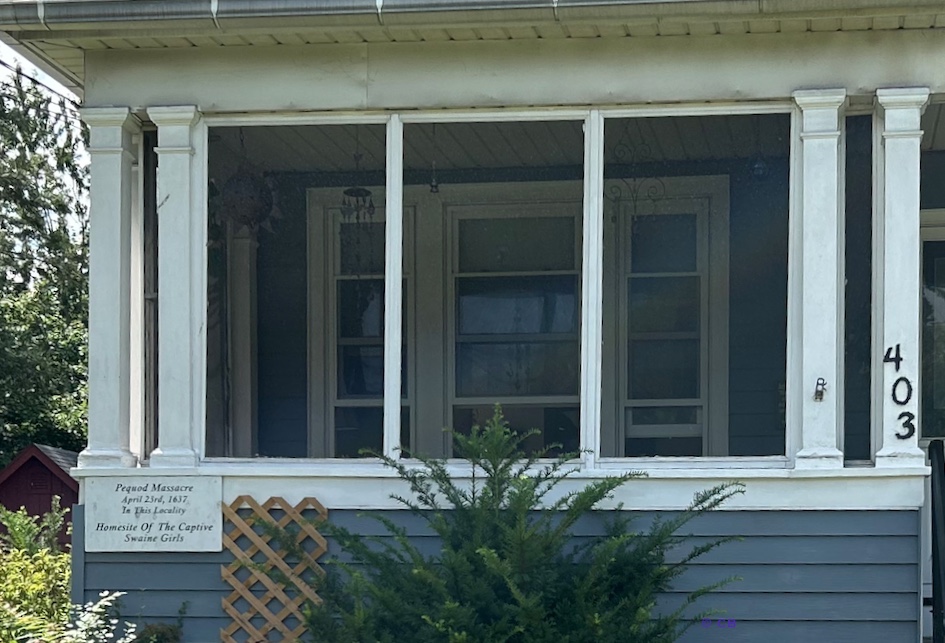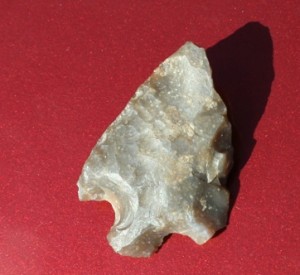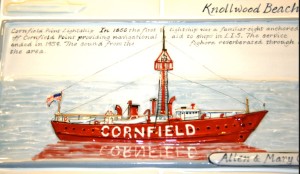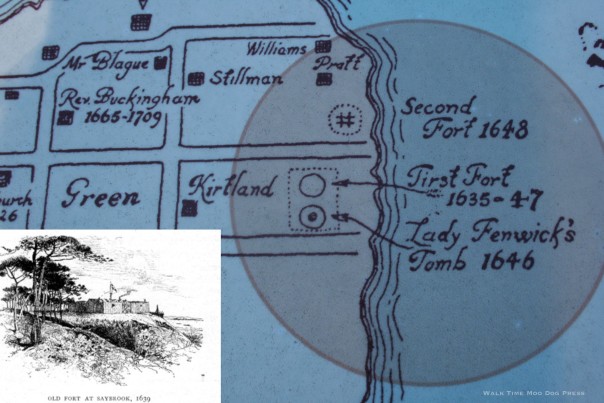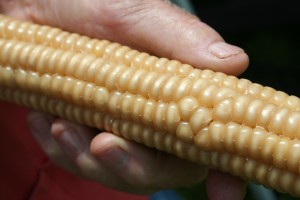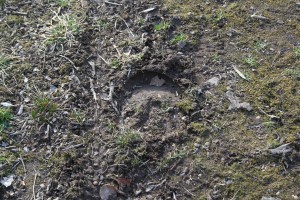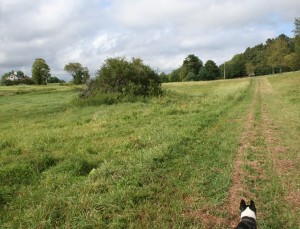Pages & Stories: Pashbeshauke, Nehantic, Pequot, Saybrook, Swaine
“History is a gallery of pictures in which there are few originals and many copies.”
Alexis de Tocqueville
Walking around since revising a short nature walks book decades ago leads to seeing curious bits of life that would otherwise pass unseen. One outing with dogs led to time travel of a sort, sparked by a small weathered sign displayed on a house in Wethersfield.
So who are the “Swaine girls” and why were they captured? Clearing the murk of time takes some doing and plenty of reading. This is part of what was found:
“On the 22 February Lieutenant Gardiner and nine men went out of Saybrook fort and were drawn into an ambush where four of them were killed and the rest escaped with great difficulty. On April 12 six men and three women were killed at Weathersfield (sic). They at the same time killed 20 cows and a horse and carried away two young women.” – from Biography and History of the Indians of North America: From Its First Discovery To Present Time by Samuel Gardner Drake published 1836.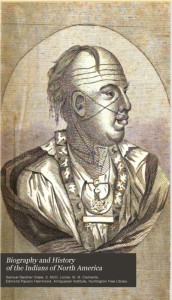
So a fort at Saybrook and a man named Lion Gardiner (spelling is not always consistent in documents from the past, so bear with this on our journey) enter the drama. Here sketched in is what happened and where, with spelling and capitalization left as it appears in the book.
“…Messatunck, a subordinate chieftain, surprised the people as they were going into the meadow killing six men and three women and taking two young girls prisoners besides killing 20 cows and doing much other damage.
“The site of this horrid transaction was a little east of the State Prison on the Street leading from the dwelling house of the late Frederick Butler Esq. and the landing near the meadow gate. The Indians concealed themselves in the bushes on the bank of the River while the laborers were at home at dinner and awaited their return. On their arrival at the spot before mentioned they sprang from their ambuscade and seized eleven, the others escaping by flight, nine of whom were immediately dispatched by the tomahawk.
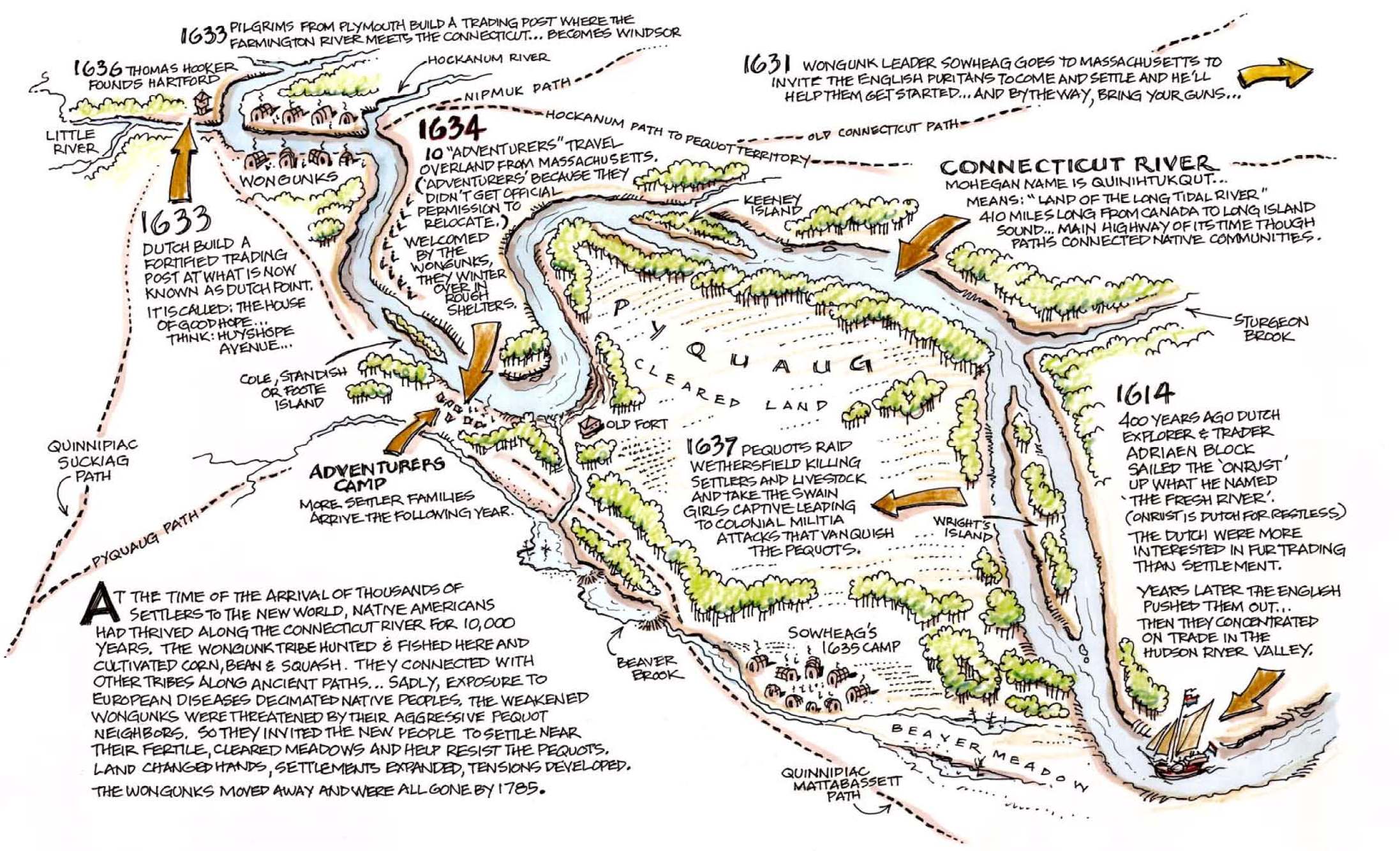
From a set of maps created by Phil Lohman, artist and Wethersfield resident. “These bird's-eye views are intended to depict, in 50-year increments, the development of Wethersfield and to highlight some noteworthy events. Please click on the illustration for a larger view.
The maps and accompanying text were originally published in the Town of Wethersfield’s 2013 ‘Plan of Conservation and Development' and were on display at the Wethersfield Public Library.” Image connects to original page of the Wethersfield Historical Society, which had more of the story and maps.
Another version of the attack fills in grisly details: “…(the) sudden approach of the savage warriors dispelled the women's doubts and they attempted to escape, but three of them were taken. Two were girls who allowed themselves to be carried away without resistance. The other struggled against her captors so stoutly biting and kicking them that one of the Indians became exasperated and dashed out her brains. … The report of this successful foray reached Saybrook two days after it took place; on the second day following the successful warriors were seen coming down the river. There were many canoes of them they sang and shouted in token of triumph and some of them held aloft shirts which they had taken from the unfortunate colonists of Wethersfield. In one of the canoes could be seen the two captive girls the one sixteen years of age the other younger and both daughters of one man named Abraham Swain (sic).” –History of the Indians of Connecticut from the Earliest Known Period to 1850 by John William De Forest“Among the slain were two men by the name of Finch Abraham and John who were near neighbors of Nathaniel Foote. The names of the others are unknown. The young girls, daughters of William Swaine (there is a footnote about the location of the house)…”
– from The Foote family: The descendants of Nathaniel Foote, published 1849.
Imagine.
Now, let's leave the saga of the girls there, and take a trek to Saybrook Point to pick up another thread of the tale. Inside the Acton Public Library in Old Saybrook is a wall installation of tiles called appropriate enough, Tides of Time. The artist is Marion Grebow. Residents and others donated segments to honor people, places, and stories from 1635 to present day activities.
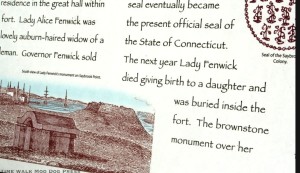
Notable is Lady Alice Fenwick, the wife of the Saybrook Colony Governor George Fenwick, the first woman to arrive to the wilderness. The story of her tomb and the fort twine together. And here is seen a cheerful lightship tile in red that stands out – Cornfield. Now that's an odd name for a lightship.
Before there was a Cornfield Point in Old Saybrook, there was a field of corn. The goal was to feed a small group of people determined to stake a claim to a river bluff in the wilderness centuries ago.
From Biography and History of the Indians of North America by Samuel Gardner Drake, this account: “The Pequots being now left to themselves commenced depredations wherever they dared appear. About the beginning of October as five men from Saybrook were collecting hay at a meadow four miles above that place they were attacked…
“About 14 days after two men were taken in a cornfield two miles from Saybrook fort.
“There were six of the whites and they were surrounded by two or 300 Indians, yet all escaped but two. Thus emboldened by success they carried their depredations within bowshot of Saybrook fort killing one cow and shooting arrows into sundry others.
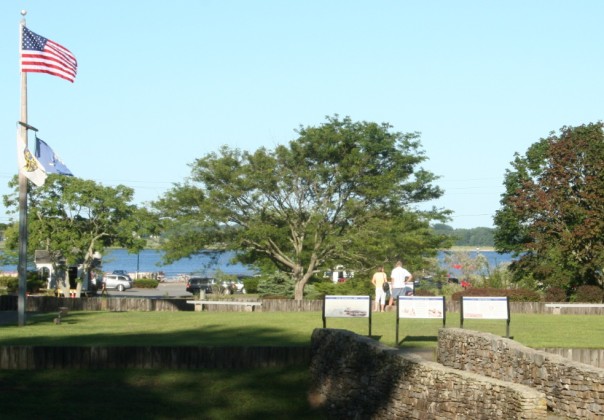
Walk the site at Saybrook Point where these things happened. Signage helps with understanding the layers of history.
“About the same time John Tilley was taken and killed and tortured in a most barbarous manner.
“As he was sailing down Connecticut River in his bark, he landed about three miles above Saybrook fort and having shot at some fowl the report of his gun directed the Indians to the spot. They took him prisoner at first and then cut off his hands and feet. He lived three days after his hands were cut off and bore this torture without complaint, which gained him the reputation of being a stout man among his tormentors. These facts were reported by the Indians themselves. Another man who was with Tilley was at the same time killed.”
John Tilley and his stoicism despite his horrific death is branded as a legacy, a named place along the Connecticut River. The Public Records of the Colony of Connecticut [1636-1776] state… “This Assembly grants to the town of Lyme, liberty to appoint some suitable person in said town to provide keep and maintain a suitable ferry boat to transport travellers over Connecticut River over against the place called Tilly's Point said ferryman to be under the same regulation as to fees etc., as is already by law provided for said ferry…”
From The History of Middlesex County 1635-1885, J. H. Beers & Co., 36 Vesey Street, New York, 1884, which includes extracts from Lion Gardiner's letter (from the Massachusetts Historical Collections). Spelling is retained as seen in the document.
Robert Chapman and Thomas Hurlburt, having desired Mr. Gardiner ‘to consider, and to call to mind the passages of God's Providence at Seabrooke, in and about the time of the Pequit war,” he wrote a letter, from which the following extracts are taken:
“In the year 1635, I Lion Gardner (sic) . . . . (Don't miss a readable passage about hunger being his main enemy of small community in the wilderness in that year, then this entry …)
After relating how he sent 12 men with the Dutchman, and three dozen new bags, how they skirmished with the Indians, killing one of them, and obtaining “a pretty quantity of corn,” he says:
“I was glad of the corn. After this I immediately took men and went to our cornfield to gather our corn, appointing others to come about with the shallop and fetch it, and left five lusty men in the strong house with long guns, which house I had built for the defence of the corn. Now these men not regarding the charge I had given them, three of them went a mile from the house a fowling, and having loaded themselves with fowl they returned.
“But the Pequits (sic) let them pass first till they had loaded themselves, but, at their return, they arose out of their ambush and shot them all three; one of them escaped through the corn, shot through the leg, and the other two they tormented. Then the next day I sent the shallop to fetch the five men and the rest of the corn that was broken down, and they had found but three as above said, and when they had gotten that, they left the rest; and, as soon as they were gone a little way from shore, they saw the house on fire.
“Now so soon as the boat came home, and brought us this bad news, old Mr. Mitchell was very urgent with me to lend him the boat to fetch hay home from the six mile Island, but I told them they were too few men, for his four men could but carry the hay aboard, and one must stand in the boat to defend them, and they must have two more at the foot of the Rock, with their guns, to keep the Indians from running down upon them.

Fort Saybrook signage near the original site. A couple enjoys views of the Connecticut River. Layers of history and human stories.
“And in the first place, before they carry any of the cocks of hay, to scour the meadow with their three dogs – to march all abreast from the lower end up to the rock, and if they found the meadow clear, then to load their hay; but this was also neglected, for they all went ashore and fell to carrying off their hay, and the Indians, presently, rose out of the long grass, and killed three, and took the brother of Mr. Mitchell, who is the minister of Cambridge, and roasted him alive; and so they served a shallop of his coming down the river in the Spring, having two men, one whereof they killed at Six mile Island, the other came down drowned to us ashore at our door, with an arrow shot into his eye, through his head.”
Roasted alive. Arrow shot into his eye, through his head. Real life is more unbelievable than anything that can be made up. (Movie directors, please consider this slice of history for another movie as good as Amistad.)
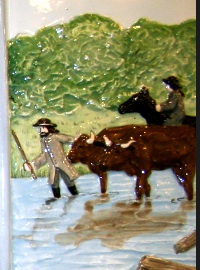
But there are always two sides to any story and finding the truth as to what happened takes facts, which are lost to time. No one taught this history in school. Boy, is it fascinating.
Now there is a new book On the Edge of Uncertainty: The Siege & Battles of Saybrook Point During the Pequot War 1636-1637 by James T. Powers, available from the Old Saybrook Historical Society.
Note: To tour the site, here is the link to Old Saybrook Parks & Recreation for current pandemic details. A portion of this story appeared on June 27, 2015. For permissions, contact the editor via our About page. Other entries in the pandemic journal linked here include dandelion wine and others with inset items of interest. A portion of this story was included in a more recent one, Nov. 2024.

